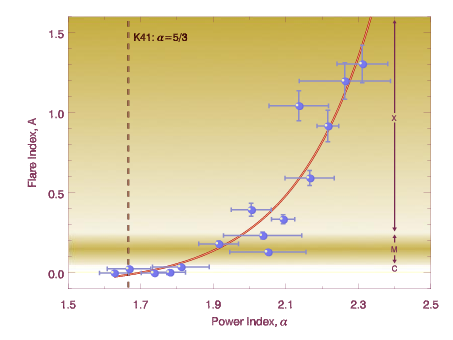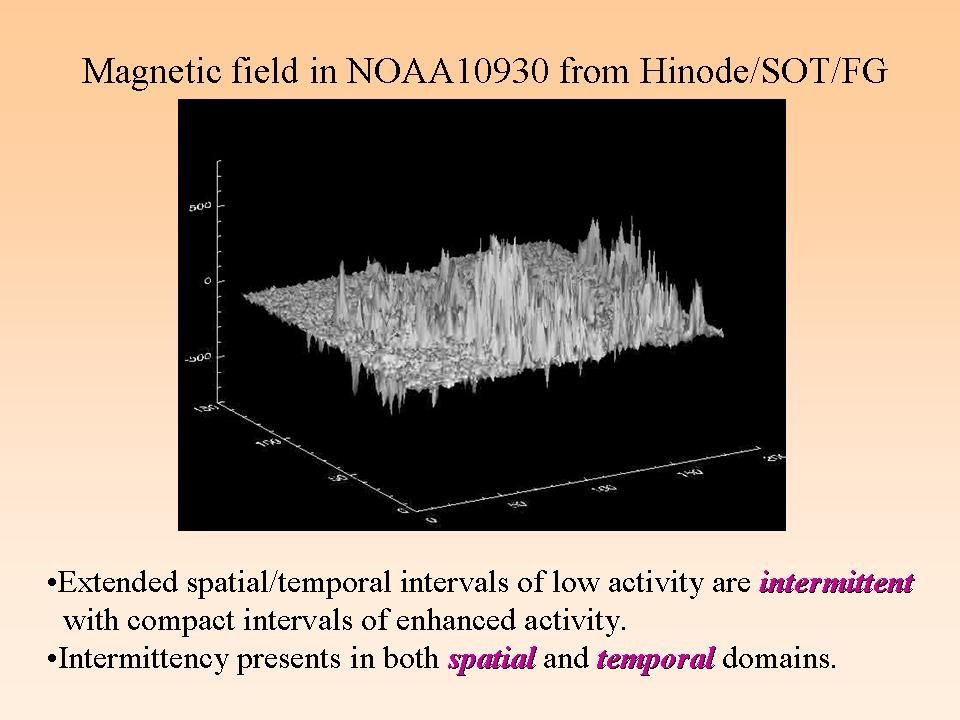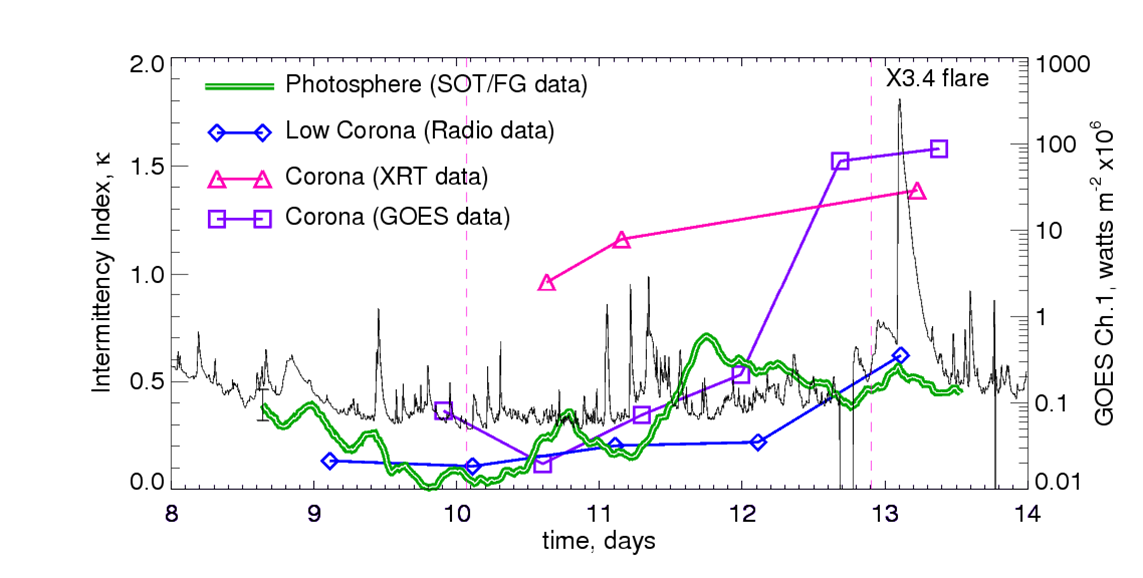In recent decades, Solar Physics research demonstrated considerable
progress in understanding of macro-scale processes (e.g., the
magneto-hydrodynamic modeling of the heliosphere, modeling of
large-scale coronal magnetic structures, etc.), on one hand and
micro-scale phenomena (e.g., turbulence of solar plasma) on the other hand.
Further progress seems to be associated with the realization of how various
micro-scale processes are involved and manifested in the macro-scale
behavior of the entire Sun. Thus, the problem of multi-scale interactions arises.
The problem can be tackled in the framework of
intermittency and multifractality. This approach seems to be a very
promising one in efforts to understand the underlying laws that
govern the behavior of solar activity. In the Big Bear Solar Observatory,
this project is lead by Dr. Valentyna Abramenko since 2000.
What is intermittency?
The notion of intermittency comes from turbulence theory and denotes
the ability of small-scale turbulent features to concentrate into
high-intensity separated blobs surrounded by extended areas of much
lower fluctuations (inverse cascade process). This property exists
in both spatial and temporal domains, so that highly intermittent
structures are prone to reveal a burst-like, explosive behavior.
More details in
Abramenko (2008).
Fig. 1. -
Intermittency in solar surface magnetic structures.
Turbulent motion of the solar plasma creates complex, highly intermittent
structures observable in the surface magnetic fields.(0365.mpg)
How to measure the intermittency?
Predicted consequences of intermittency for solar active regions:
eruptive energy releases and creation of a self-organized criticality state.
Our goal: to check this on real data and, possibly, to use for flare forecast.
Intermittency of the photospheric magnetic fields versus flaring
productivity of active regions (ARs)
Fig. 2. - Time variations of the intermittency index, κ,
determined for NOAA AR 10930 (observed on Dec 8 -13, 2006) from i)
photospheric magnetograms (Hinode SOT/FG data), ii) Hinode XRT data,
iii) Nobeyama radio data, and iv) GOES flux. Thin black line represents
the GOES flux data. The data show that gradual increase of coronal
intermittency occurred after the peak of the photospheric intermittency.
The time delay between the peak of photospheric intermittency and
the occurrence of the first strong (X3.4) flare was approximately 1.3 days.
Thus, the enhancement of intermittency/complexity first occurs in the
photosphere and is later transported toward the corona.
The full text is
here.
 |
Fig. 3 - Power index a versus flare index A plotted for 16
active regions. The dashed straight line indicates the power index
α = 5/3 for the stationary non-intermittent Kolmogorov turbulence K41.
The curve shows the best fit to the data: A(α) = 409.5(α - 5/3)2.5.
We found that the magnitude of the power index at the stage of emergence
of an AR reflects its future flare productivity. Detail are in
here.
- The Project Intermittency Bibliography can be found
here.
- Talks delivered at meetings can be seen
here.
- More details on the intermittency and turbulence can be found in
Frisch (1995) .
 Send Comments to:
[email protected]
Send Comments to:
[email protected]
© BBSO/NJIT - Last modified: March 8, 2009.


